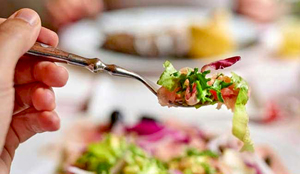Jun 14: Have you been trying to drop those extra kilos, but somehow always fail to do so? A new research conducted at the Physicians Committee for Responsible Medicine in Washington DC, revealed that going vegetarian can be more effective for weight loss than following a conventional low-calorie diet. Foods like vegetables, grains, legumes, fruits and nuts help in the reduction of muscle fat which further helped improve glucose and lipid metabolism as well as an average loss of 6.2 kg compared to 3.2 kg for the conventional diet, researchers said.
The research, led by Dr Hana Kahleov, Director of Clinical Research recruited 74 participants, all with type 2 diabetes and randomly assigned subjects to two groups, either following a vegetarian diet or a conventional anti-diabetic diet.
The vegetarian diet included vegetables, grains, legumes, fruits and nuts, with animal products limited to a maximum of one portion of low-fat yogurt per day.
Foods like vegetables, grains, legumes, fruits and nuts help in the reduction of muscle fat
The conventional diabetic diet followed the official recommendations of the European Association for the Study of Diabetes (EASD). All participants had their daily diets cut by 500 kilo calories per day.
The researchers used magnetic resonance imaging (MRI) to look at the adipose (fat-storage) tissue in the subjects' thighs to see how the two different diets had affected subcutaneous fat, found under the skin, subfascial fat, on the surface of the muscles, and intramuscular fat, on the inside of the muscles.
The team found that the vegetarian diet was almost twice as effective in reducing body weight, resulting in an average loss of 6.2kg compared to 3.2kg for the conventional diet.
These shocking results found that even though same amount of calories was cut down for both diets, those following the vegetarian diet showed a greater reduction in intramuscular fat than those following the low-calorie diet, and were the only participants to show a reduction in subfascial fat.
According to the head researcher Dr Hana Kahleov "A vegetarian diet is much more effective for reducing muscle fat, thus improving metabolism. This finding is important for people who are trying to lose weight, including those suffering from metabolic syndrome and/or type 2diabetes. But it is also relevant to anyone who takes their weight management seriously and wants to stay lean and healthy."
These results are important for people suffering from type2 diabetes as subfascial fat has been previously associated with insulin resistance, so reducing it could have a beneficial effect on glucose metabolism.
The results can be found published online in the Journal of the American College of Nutrition.





Comments
Add new comment